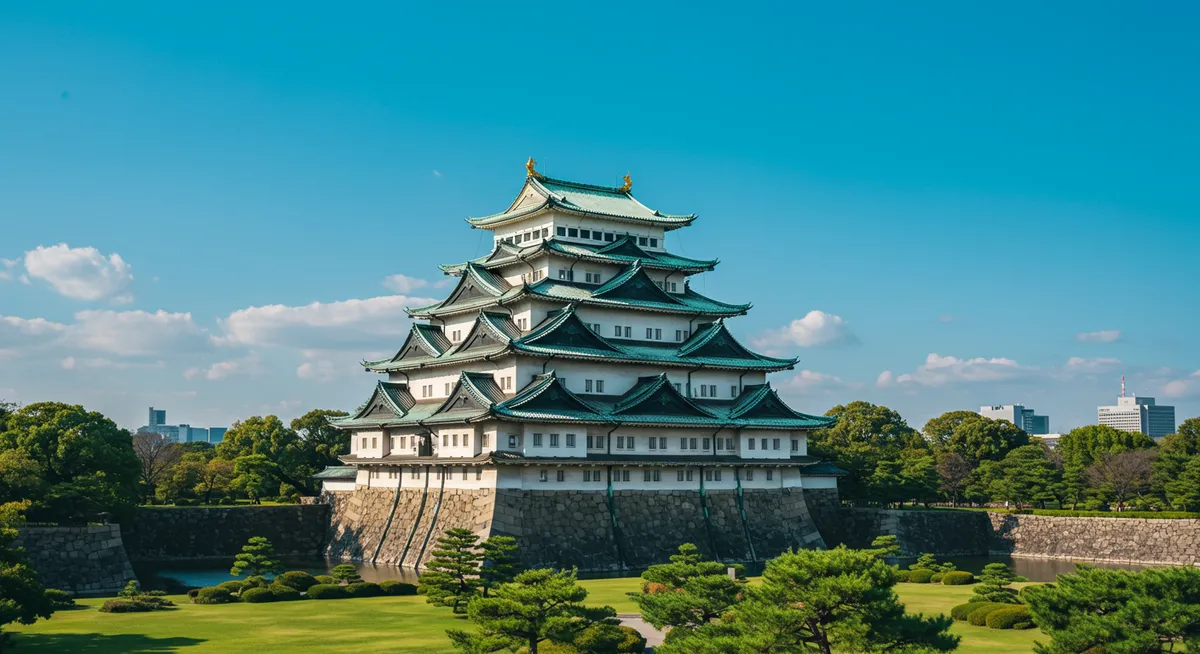
Nagoya Historical Sites: A Journey Through Time
Table of Contents
Want to find the best travel deals for this destination? Chat with our travel hacking specialist!
Get Travel HacksCategory: nagoya-historical-sites
Unveiling Nagoya's Rich Historical Tapestry
As a seasoned traveler who has explored Japan extensively, I've always been captivated by the deep history embedded in its cities. Nagoya, in particular, offers a fascinating glimpse into its past, showcasing resilience and tradition. For comprehensive planning, explore more about your trip to Asia. This guide highlights the essential Nagoya historical sites that promise to enrich your understanding of this dynamic region.
Nagoya Castle: A Symbol of Resilience
Dominating the cityscape, Nagoya Castle is arguably one of the most prominent of all Nagoya historical sites. This magnificent reconstruction, featuring its iconic golden shachihoko (tiger-carp) on the rooftops, symbolizes the city's enduring spirit despite its wartime destruction. Moreover, the Honmaru Palace, meticulously restored, offers an unparalleled glimpse into the lavish lifestyle of the Tokugawa clan, complete with exquisite traditional art and architecture. I recall climbing the impressive tower, getting a fantastic view of the city – it's truly a testament to Nagoya's enduring spirit. Furthermore, a visit here provides a deep appreciation for Japan's feudal past and its remarkable preservation efforts. Consider adding this significant landmark to your list of best things to do in Nagoya.
Atsuta Jingu Shrine: Japan's Spiritual Heart
For those seeking spiritual solace and a connection to ancient traditions, Atsuta Jingu Shrine stands as a venerable pilgrimage site. It's one of Japan's most important Shinto shrines, said to house the Kusanagi-no-Tsurugi (Grass-Mowing Sword), one of the Imperial Regalia of Japan. The expansive, tranquil grounds offer a peaceful retreat from the urban bustle, featuring towering cypress trees and numerous smaller shrines. Walking through its serene, ancient grounds, I always feel a profound sense of peace, a true escape from urban hustle. Indeed, exploring this sacred sanctuary provides valuable insights into Japan's profound spiritual heritage. It’s an essential stop for any comprehensive Nagoya travel guide.
Osu Kannon Temple: Tradition Meets Modernity
Nestled amidst the lively Osu Shopping Street, Osu Kannon Temple presents a fascinating blend of historical reverence and contemporary urban culture. Originally built in Gifu Prefecture in the 14th century and later moved to Nagoya by Tokugawa Ieyasu, this historic temple houses a large wooden Kannon statue and a vast collection of ancient texts, including the oldest copy of the Kojiki. The temple's lively flea market is a gem; I've found unique souvenirs there, blending history with local commerce. Consequently, visitors can explore its hallowed halls before diving into the vibrant atmosphere of the surrounding shopping arcades, making it a unique cultural experience. Integrate this into your Nagoya itinerary for a truly varied experience.
Tokugawa Garden & Art Museum: Edo Period Splendor
Step back in time to the Edo period by visiting the exquisite Tokugawa Garden and its adjacent Art Museum. This traditional Japanese garden, once part of a residence belonging to the Owari branch of the Tokugawa family, features a beautiful pond, meticulously manicured landscapes, and a captivating waterfall. Furthermore, the Tokugawa Art Museum proudly displays a wealth of treasures from the Tokugawa family, including samurai armor, Noh masks, and artifacts that reveal the opulence of feudal Japan. The meticulously maintained garden, especially in autumn, is breathtaking; it offers a compelling glimpse into aristocratic life. This combination of a historical garden and a rich museum offers a unique window into a bygone era, making it an excellent stop when considering where to stay in Nagoya for cultural immersion.
Frequently Asked Questions
What is the most significant historical site in Nagoya?
Are Nagoya's historical sites wheelchair accessible?
How much time should I allocate for visiting Nagoya's historical sites?
Exploring Nagoya historical sites is an enriching journey through Japan’s feudal past and spiritual traditions. From the resilience symbolized by Nagoya Castle to the tranquility of Atsuta Jingu Shrine, each location tells a unique story. These historic landmarks offer more than just sightseeing; they provide a profound connection to the city's soul. We highly recommend delving into these ancient wonders to truly appreciate Nagoya's enduring cultural heritage. Plan your visit today to uncover the captivating history of this dynamic city.